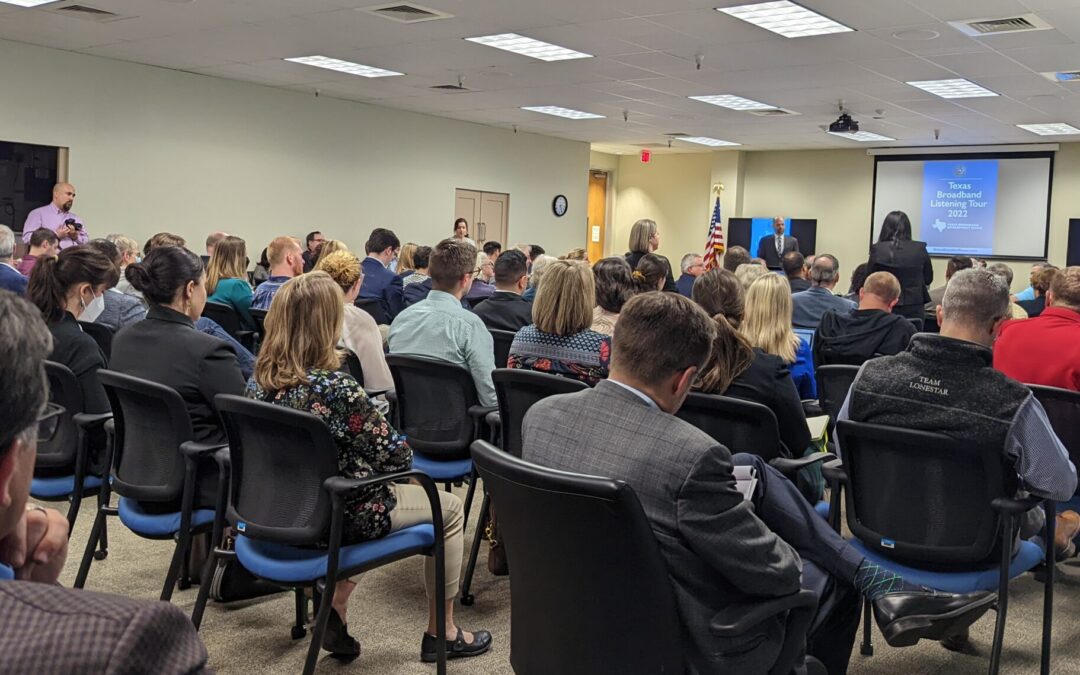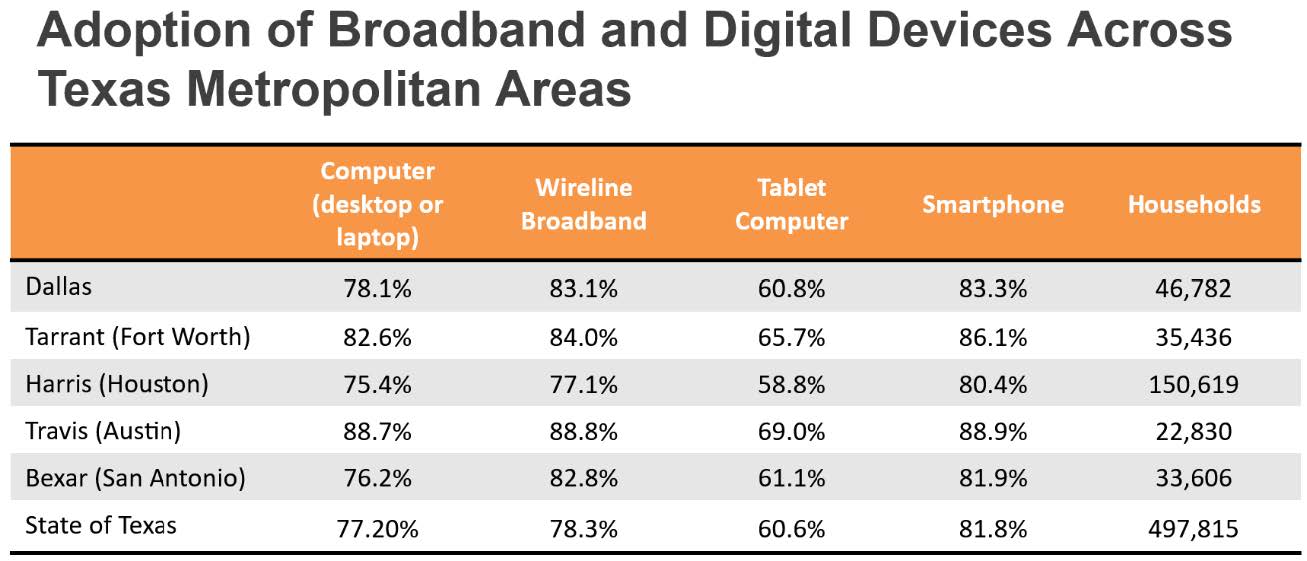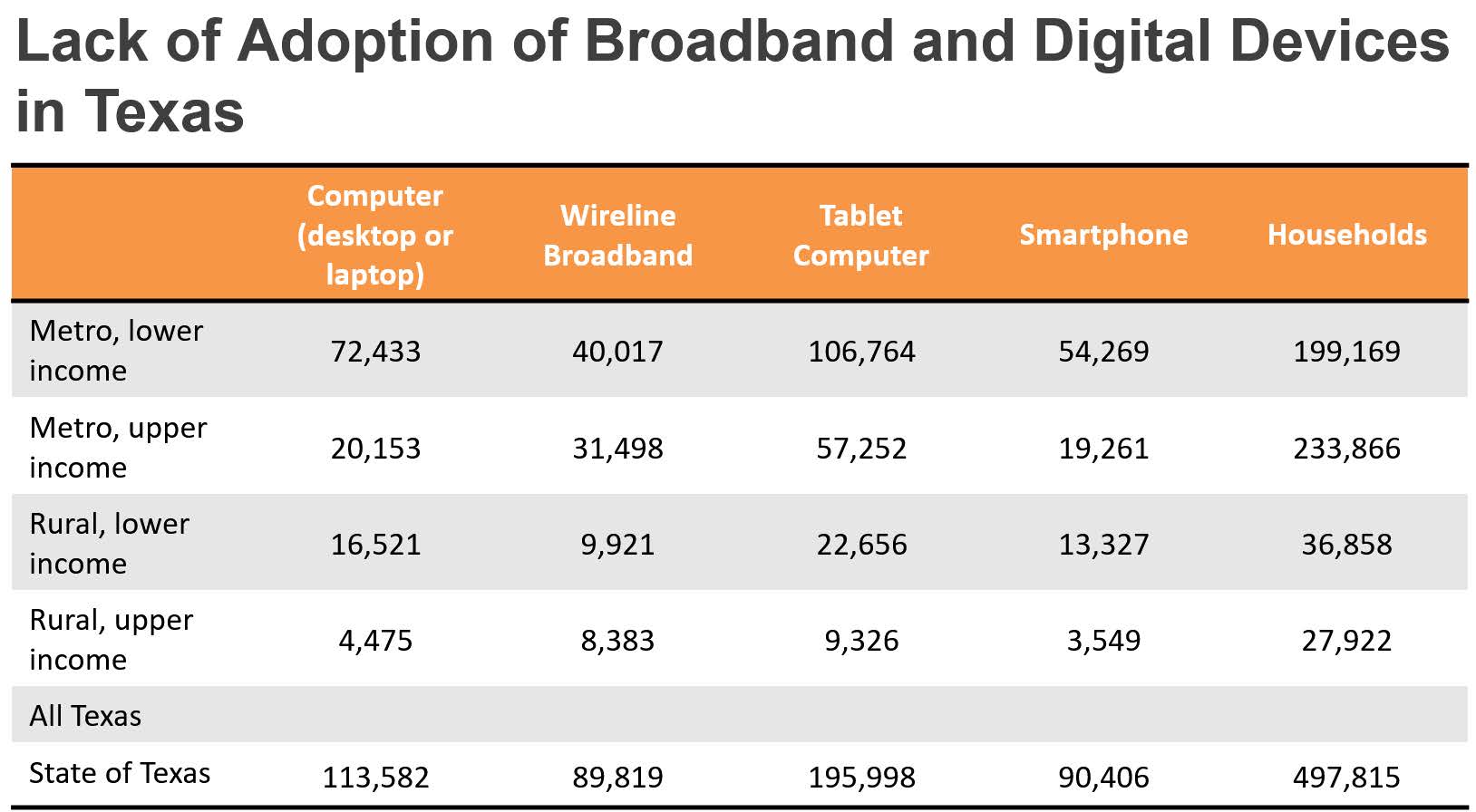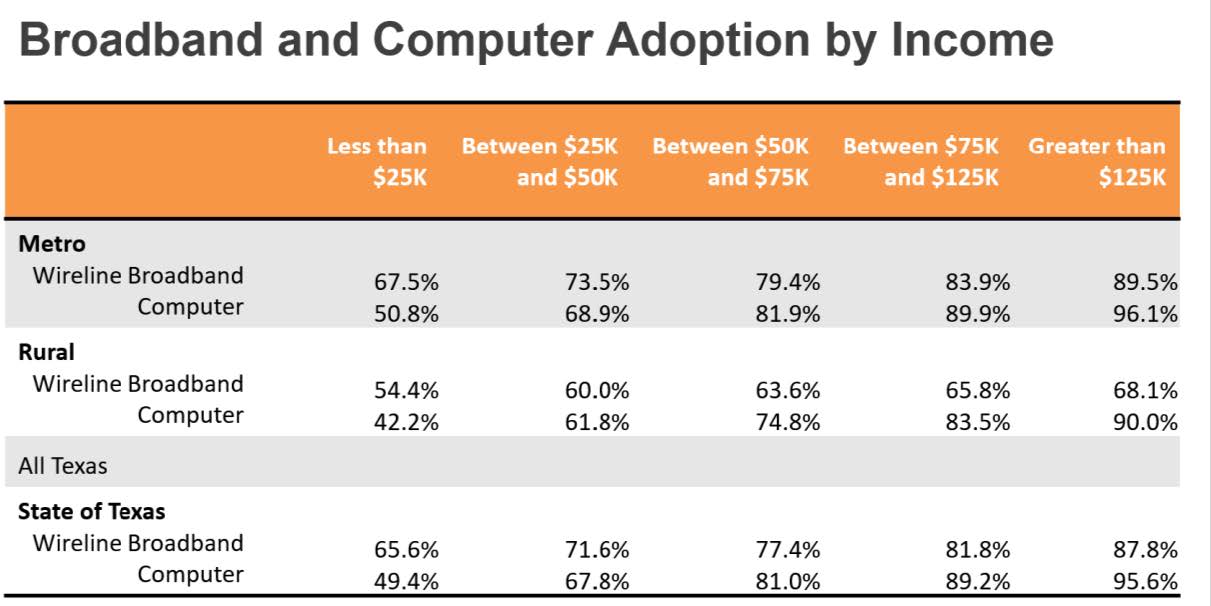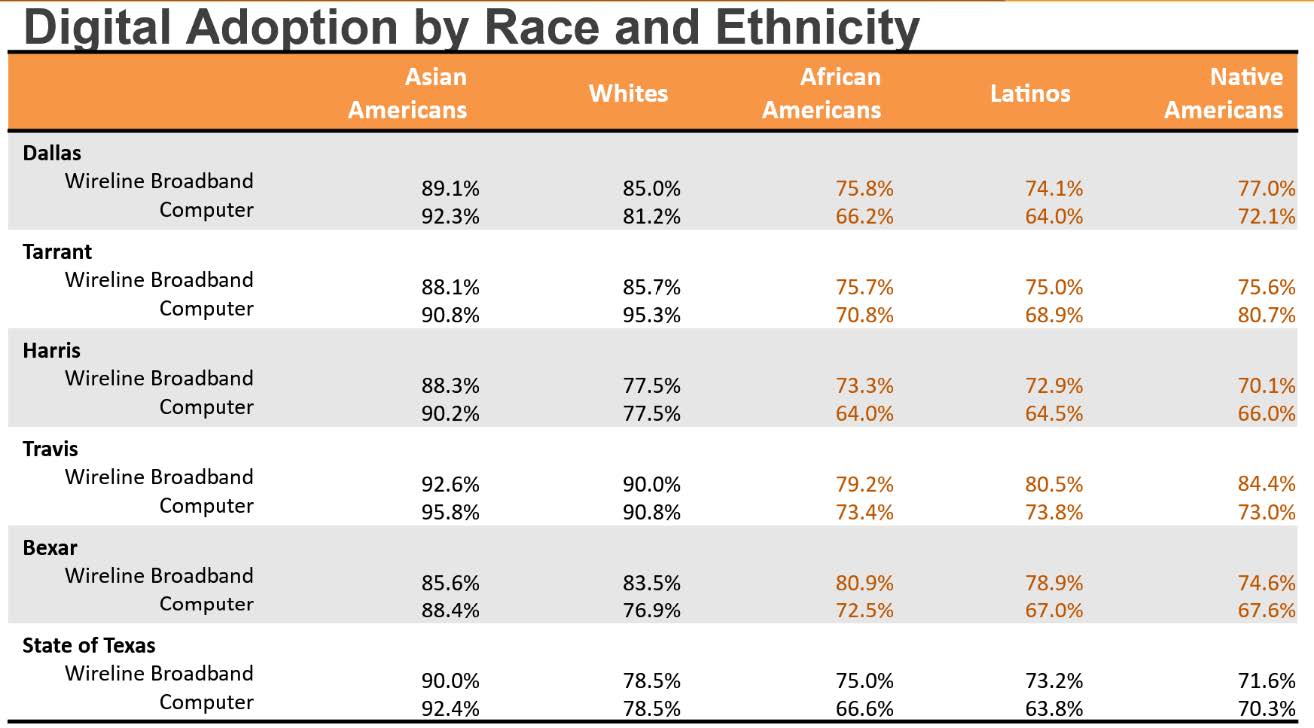On March 10, 2022, Post-Doctoral Research Fellow Dr. Richelle Crotty attended the Broadband Listening Tour of the Texas Broadband Development Office (BDO) to share TIPI’s recommendations for the development of Texas’ first broadband plan. In advance of the influx of federal funding set to expand broadband internet access and address digital divides across the country, Texas Comptroller Glenn Hegar is visiting 12 community regions across Texas to gather input about the broadband issues facing Texans.
Texas BDO will receive $500.5 million from the “American Rescue Plan Act – Coronavirus Capital Projects Fund” and estimates an additional $100 million from the “Infrastructure Investment and Jobs Act – Broadband Equity, Access, and Deployment Program.” These funds are intended to help states create broadband plans, address infrastructure needs, and help citizens access the information technology capacity needed for full participation in our society, democracy, and economy.
Our recommendations can be downloaded here.
Objectives
- Every Texan has equitable, affordable access to broadband
- Every Texan has access to affordable internet-enabled devices that fit their needs
- Every Texan has access to digital skills and literacy trainings and technical support
- Funds support community-based, long-term, comprehensive, systemic solutions to the digital divide that grant digital equity and digital dignity to every Texan
Statewide Broadband Statistics
More than 12% of Texans live in areas where there is no broadband infrastructure that provides minimally acceptable speeds. And 43.3% of Texans live in areas where there is only one such internet provider. Even where infrastructure is available, broadband may be too expensive to be within reach. 13.7% of Texas household do not have an internet subscription.
Digital gaps across the State of Texas as of 2020 still exist:
22% of all households do not have high-speed internet access at home (some 1,736,000 households).
25% of Texas homes, or 2,406,000 households, do not have a desktop or laptop computer.
19% households (1,827,000 households) neither have a desktop, laptop, or tablet computing device
17% of households (1,594,000 households) do not own a smartphone.
Digital gaps exist in both rural and urban households across Texas:
37.7% of rural households do not have a broadband connection.
41.2% of low-income, rural Texans do not subscribe to broadband, which is lower than 33.9% of upper-income rural households and 27.6 of lower income metropolitan households.
Urban Texans with low incomes also face digital challenges; 28% do not have broadband access and 36% do not have a desktop or laptop computer.
Recommendations:
Statewide: planning, data & research
-
-
- Create state, local, and community-based digital equity offices, to coordinate research, planning, and implementation.
- The digital equity offices should have, at minimum, one dedicated staff member to manage digital equity planning and implementation
- Map and report on statewide broadband availability and quality of service annually, with county and zip-code level data
- Administer grant programs to provide funding to encourage periodic digital inclusion assessments and needs and assets assessments, and provide for programs to incorporate findings and changes based on assessments
- Partner with universities to conduct research, mapping, and program evaluations
- Partner with existing digital inclusion and equity organizations to identify needs and implement programs
- Funds should be used to prioritize stakeholder and community engagement throughout the planning process by creating a stakeholder engagement plan that requires the (funded) participation of individuals from the covered populations
-
Statewide: affordability, accessibility, and availability
-
-
- Prioritize investments in long-term, comprehensive, systemic solutions
- Funds should be used to increase the capacity of trusted community-based organizations and community anchor institutions that often already provide digital inclusion services
- Invest in fiber-to-the-home and next generation services for all communities, including rural
- Work with Texas State Libraries and Archives Commission to invest in, improve, and extend broadband infrastructure at libraries to other community institutions and homes
- Expand Operation Connectivity, especially for lower-income populations
- Provide price-volume discounts in sparsely populated areas and in populations with low incomes with constrained ability to pay for service.
- Address ‘digital redlining,’ a process of income-based discrimination carried out against lower-income neighborhoods, and invest in community-based solutions
- Explicitly address racial/ethnic inclusion at county and state levels
- Identify and address barriers encountered by those who are ‘smartphone dependent’
- Improve local and state government public services’ mobile offerings
- Invest in a wider distribution of devices to address device gaps
- Invest in disaster planning and mitigation efforts to create resilient broadband infrastructures
- Make the Affordable Connectivity Program (ACP) permanent, make it easier for Texans to apply for ACP
-
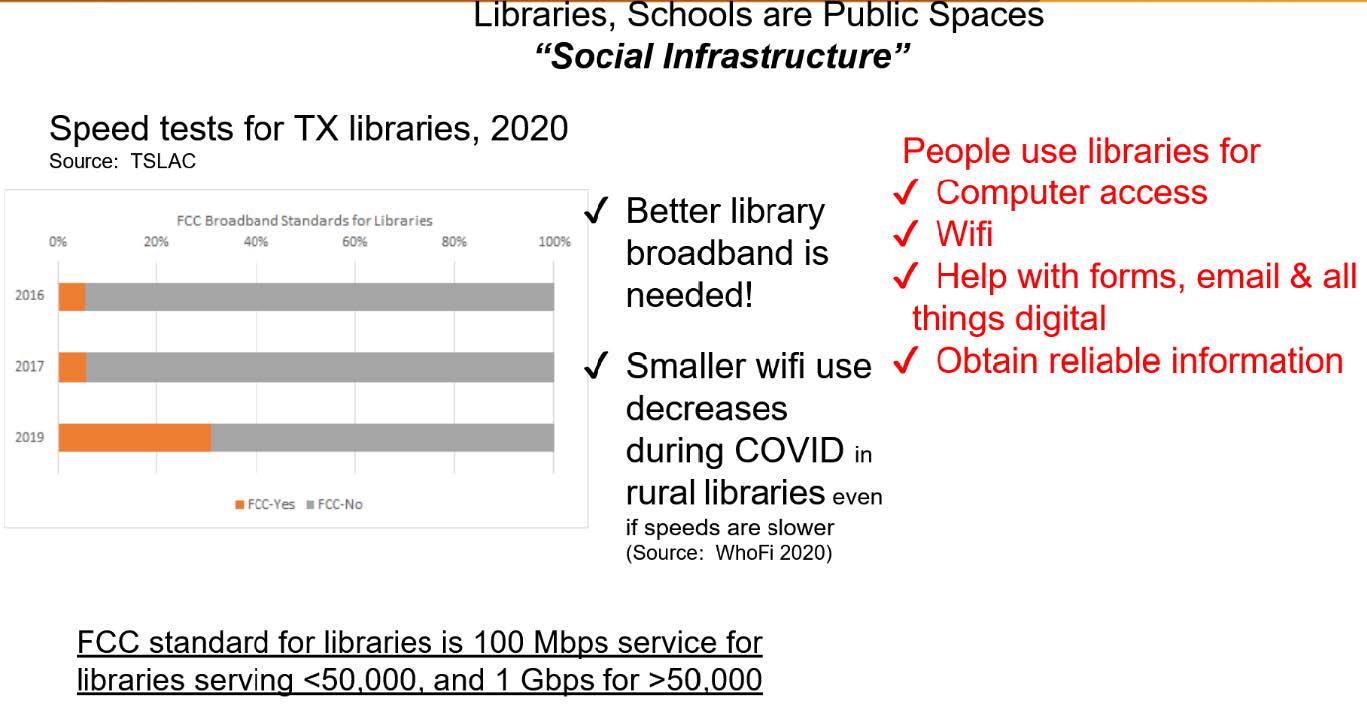
Issues with FCC Data
The FCC data on broadband availability overstates the availability of broadband in Texas. Until the FCC data is improved, it cannot be used solely as the basis to determine need for improvements to broadband infrastructure. In the image below, the FCC data on the left indicates that most of Texas has broadband availability in the 60-100%. Meanwhile the data provided by Microsoft on the Quality of Service of broadband in Texas indicates that most of Texas is in the 20-40% range.
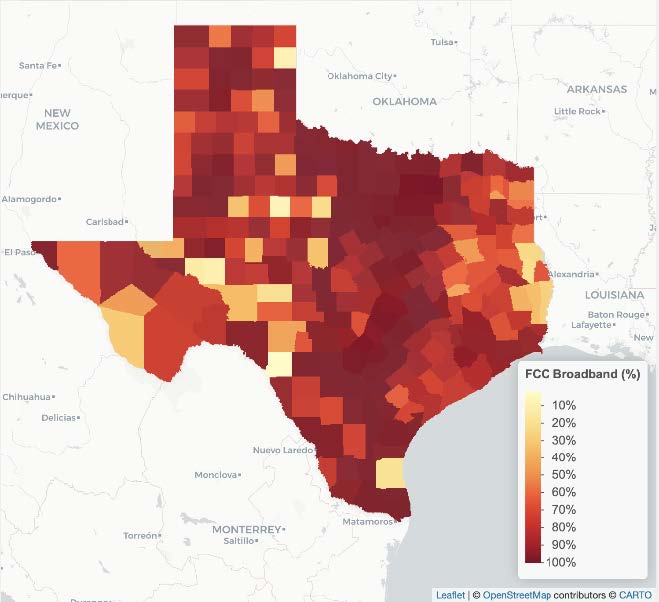
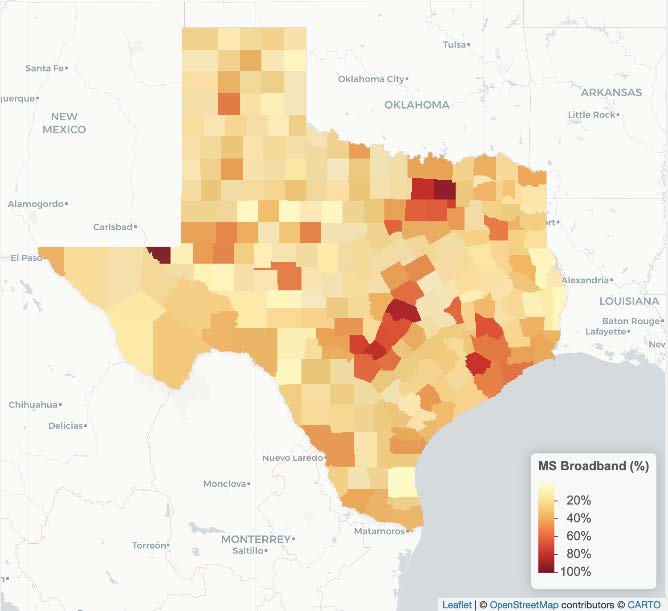
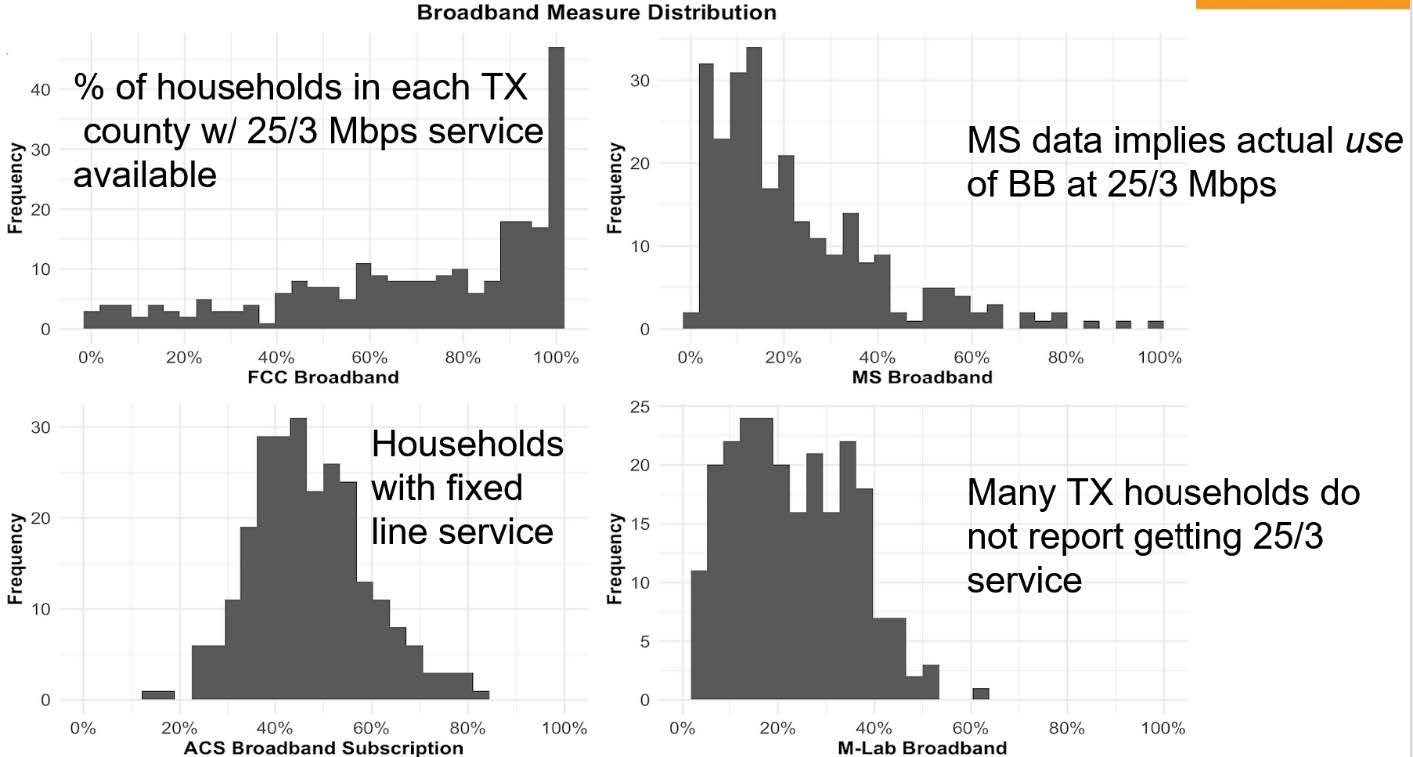
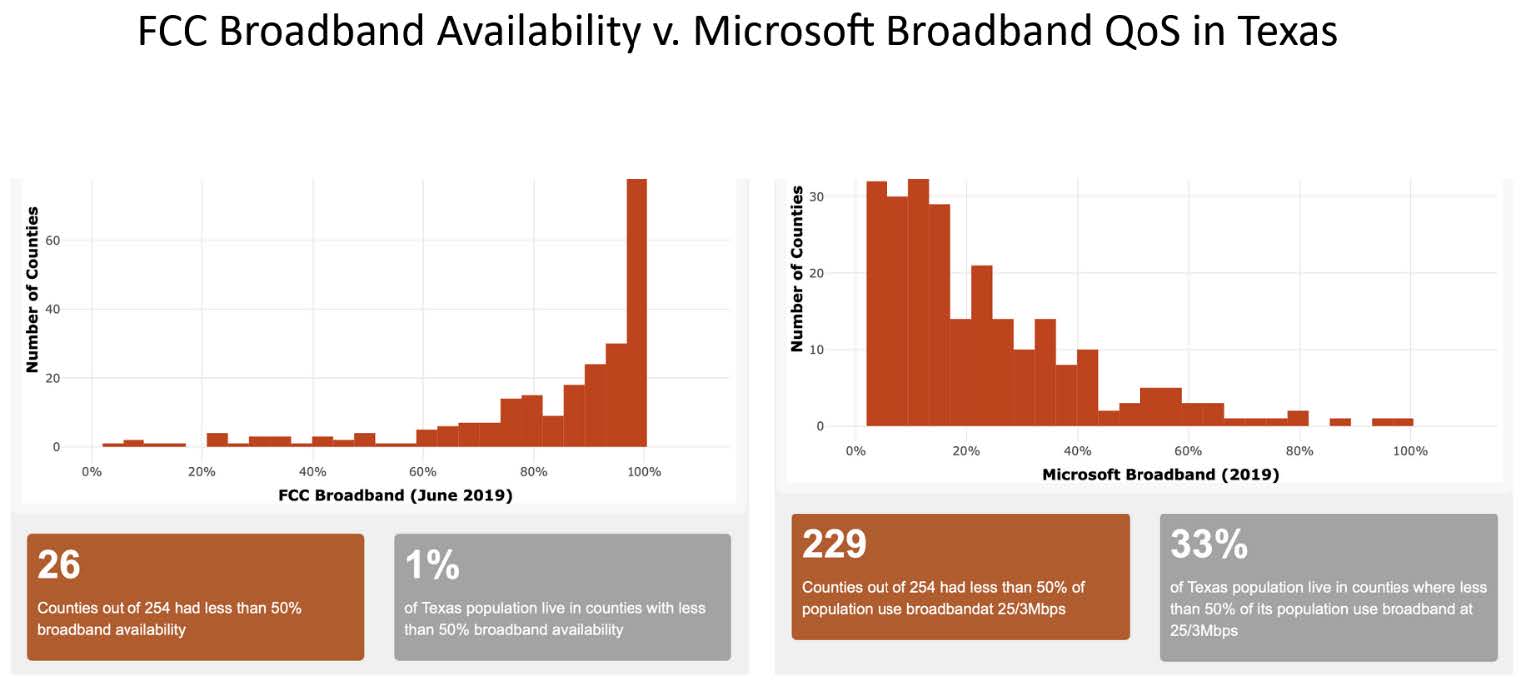
About the Technology and Information Policy Institute
Established in 1996 and directed by Dr. Sharon Strover and Dr. Keri Stephens, the Technology and Information Policy Institute serves to research imbalances and provide insights that inform public policies and programs focused on digital inclusion for everyone. Housed in the Moody College of Communication, at the University of Texas at Austin, the institute also investigates the social impacts of digital media, growing concerns around disasters and risk, and artificial intelligence in the future of work. In addition to sponsoring educational programs and conferences, the institute shares its world-class expertise in hopes of increasing access to communication technologies, and thus vastly improve technology literacy, standards of living, and innovation.

